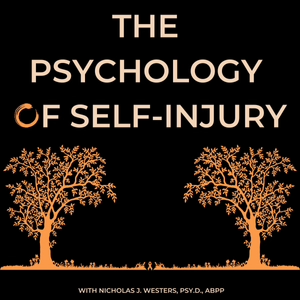
Self-Injury in Japanese Manga, with Dr. Yukari Seko
The Psychology of Self-Injury: Exploring Self-Harm & Mental Health09/03/21 • 38 min
Manga are comics or graphic novels originating from Japan. Not only do manga reveal and reinforce cultural values, beliefs, and norms, particularly in Japan, but they can also be used as a teaching tool and source of information. Manga and other comics can be used in medicine to learn and teach about illness and to build empathy. They also have the power to shape public understanding of mental health issues, even nonsuicidal self-injury (NSSI).
In this episode, Dr. Yukari Seko explains how self-injury and the characters who engage in the behavior are portrayed in Japanese manga. She also discusses the importance of manga within Japanese culture. Below is a reference (with a link) to her research paper along with a breakdown of common genres of manga and, based on her study, just how many characters within each genre engage in self-injury and self-harm:
GENRES OF MANGA (& the number of characters depicted who self-injure, based on Dr. Seko's study):
1. shōjo: comics for girls 18 and younger (written for girls, by girls) - depicted 10 characters who self-injure
2. shōnen: comics for boys 18 and younger (written for boys, by boys, about boys) - depicted 0 characters
3. seinen: comics for young males age 18-30 - depicted 6 characters, portrayed as menhera (a derivation of "mental health-er," a person with mental instability or "mentally vulnerable damsels in distress")
4. josei: comics for young females 18-30 - depicted 1 character
5. Boy's Love: a subgenre of josei manga featuring erotic relationships between male characters - depicted 1 character
6. seijen: comics for grownups - depicted 0 characters
7. redicomi: "Lady's Comic" for adult women - depicted 0 characters
8. slice-of-life: genre that features realistic depictions of everyday life.
Seko, Y., & Kikuchi, M. (2021). Self-injury in Japanese manga: A content analysis. Journal of Medical Humanities, 42(3), 355-369.
Seko, Y., & Kikuchi, M. (2022). Mentally ill and cute as hell: Menhera girls and portrayals of self-injury in Japanese popular culture. Frontiers in Communication, 7.
To learn more about Dr. Seko and her work at Ryerson University, visit https://www.ryerson.ca/procom/people/yukari-seko/.
To learn more about graphic medicine and novels referenced in this episode, see Williams, I. C. M. (2012). Graphic medicine: comics as medical narrative. Medical Humanities, 38(1), 21-27.
Follow Dr. Westers on Instagram and Twitter (@DocWesters). To join ISSS, visit itriples.org and follow ISSS on Facebook and Twitter (@ITripleS).
The Psychology of Self-Injury podcast has been rated #5 by Feedspot in their "Top 15 Clinical Psychology Podcasts You Must Follow in 2021" and by Welp Magazine in their "20 Best Injury Podcasts of 2021."
09/03/21 • 38 min
Generate a badge
Get a badge for your website that links back to this episode
<a href="https://goodpods.com/podcasts/the-psychology-of-self-injury-exploring-self-harm-and-mental-health-217307/self-injury-in-japanese-manga-with-dr-yukari-seko-24473038"> <img src="https://storage.googleapis.com/goodpods-images-bucket/badges/generic-badge-1.svg" alt="listen to self-injury in japanese manga, with dr. yukari seko on goodpods" style="width: 225px" /> </a>
Copy